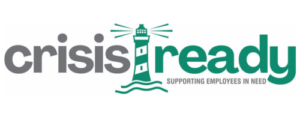Crises can emerge without warning in today’s fast-paced work environment, posing significant organizational challenges. How effectively is your organization prepared to manage such crises? Where do you stand on a confidence scale of one to seven?
Alarmingly, many HR professionals and managers are unprepared to tackle crises effectively due to a lack of proper training. While specific emergency management planning won’t be detailed here, having a robust and well-tested readiness plan is crucial for ongoing preparedness.
Understanding the types and impact of workplace crises
Crises in the workplace can originate from many sources, including structural failures, IT issues, financial instability, and personnel-related incidents. The impact of these crises can vary dramatically, often leaving employees affected to different extents.
Organizations need to acknowledge the potential for direct harm and the nuanced ways individuals might be affected. Dealing with the aftermath of a crisis can be as traumatic as experiencing it directly, and the psychological ramifications for employees can be profound.
Events that may disrupt the workplace include significant layoffs, natural disasters, workplace accidents, suicides, cybersecurity breaches, financial crises, and reputational damage. Each can affect employees profoundly.
Understanding that trauma is subjective is key. A situation might affect one employee deeply, while another might process it relatively easily. There’s no universal timeline for trauma to manifest; it can be immediate or delayed. Effective crisis management, therefore, requires a nuanced understanding of these diverse and unpredictable responses.

Empowering Individuals to Prevent Crises and Support Employees in Need
Join HR News Canada, HR Law Canada and Howatt HR for this ground-breaking program designed to transform your approach to workplace crisis management. Led by Dr. Bill Howatt, an internationally known expert in psychological safety, this four-part series will equip leaders with the key skills and strategies to enhance your professional capabilities and bring about meaningful impacts in your work environment. Registration is now open!
For more information, visit www.CrisisReady.ca.
Steps to effective crisis management
Identify and define the crisis. Effective crisis management begins by defining and understanding the incident. A workplace crisis can be an unforeseen event that disrupts normal operations and creates significant stress or hardship for employees and the organization. It is essential to recognize that when employees’ stress levels escalate, it can lead them into a crisis state. In such a state, individuals often experience heightened anxiety, confusion, and a sense of being overwhelmed, which can severely impair decision-making abilities. It is crucial to recognize these symptoms to prevent further escalation.
Assess the potential for trauma. Not every crisis will result in trauma, but events perceived as profoundly disturbing can lead to emotional, psychological, or physical distress. Employees may respond to the same event in vastly different ways, with some experiencing significant mental and emotional impacts. Viewing crises through a psychological health and safety lens allows organizations to recognize mental harm or injury and understand how these can impair employees’ capacity to perform their duties effectively. Cultivating an organizational awareness of these dynamics is critical in managing crises effectively.
Implement intervention and action plans. Regardless of severity, any crisis necessitates thoughtful interventions to stabilize the workplace environment and the individuals involved. The initial steps should focus on ensuring the safety of all parties involved, directly or indirectly. Once safety is secured, the next objective is harm reduction and resolution. The type of crisis will dictate the actions and planning required to stabilize and move beyond the crisis. A significant challenge is that the resources and time needed for effective stabilization and recovery can vary, and the roadmap to resolution must be adaptable to new challenges that may arise, such as financial strain or resource scarcity during the recovery phase.
Ensure continuous support and monitoring. A critical component of crisis management is ongoing monitoring and support through a systematic Plan-Do-Check-Act approach. This ensures the action plans lead to desired outcomes and that employees receive the support needed to recover. In many cases, support for individuals might be required long after the crisis is resolved. For example, following a workplace accident, employees who witnessed the event may need extended emotional and psychological support even after operational stability has been restored. It’s essential to recognize that recovery timelines differ, and some employees may never fully return to their previous well-being. Organizations that proactively support mental resilience and provide mental health resources are better equipped to help their employees navigate these challenges.
Building a culture of preparedness and resilience
Preparation is vital in mitigating the impact of workplace crises. Organizations should prioritize building a culture emphasizing mental health, resilience, training, and commitment to creating psychologically healthy and safe workplaces. They must equip professionals charged with protecting employees with crisis management skills and provide them with the tools to navigate crises.
While crises are often unpredictable, their impact on workforces can be significantly lessened through crisis readiness preparation.



